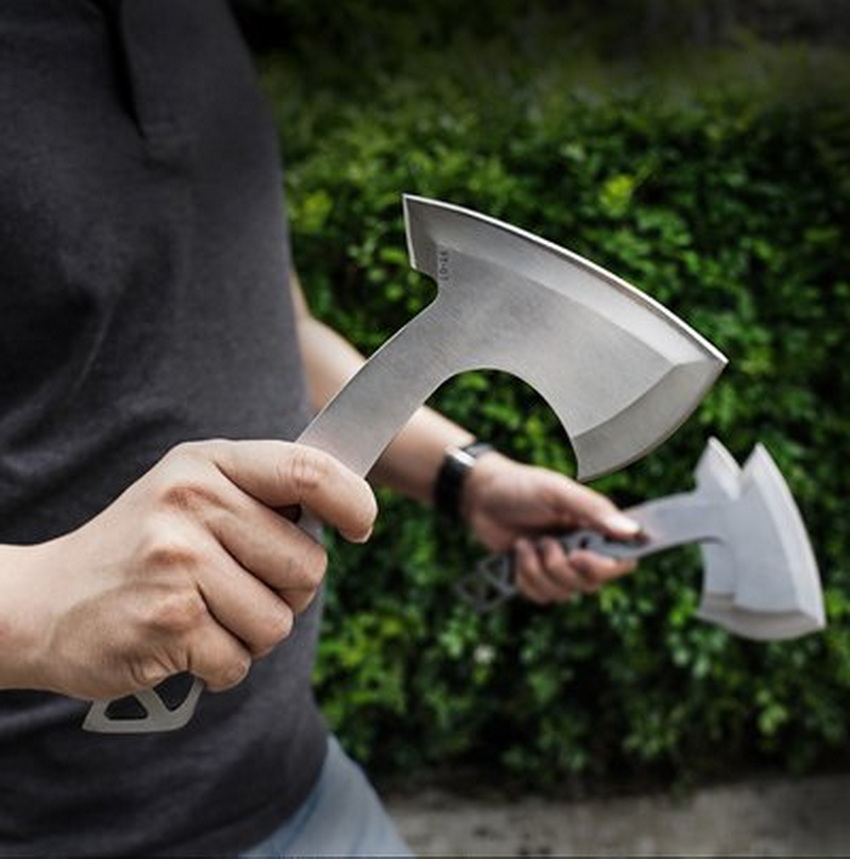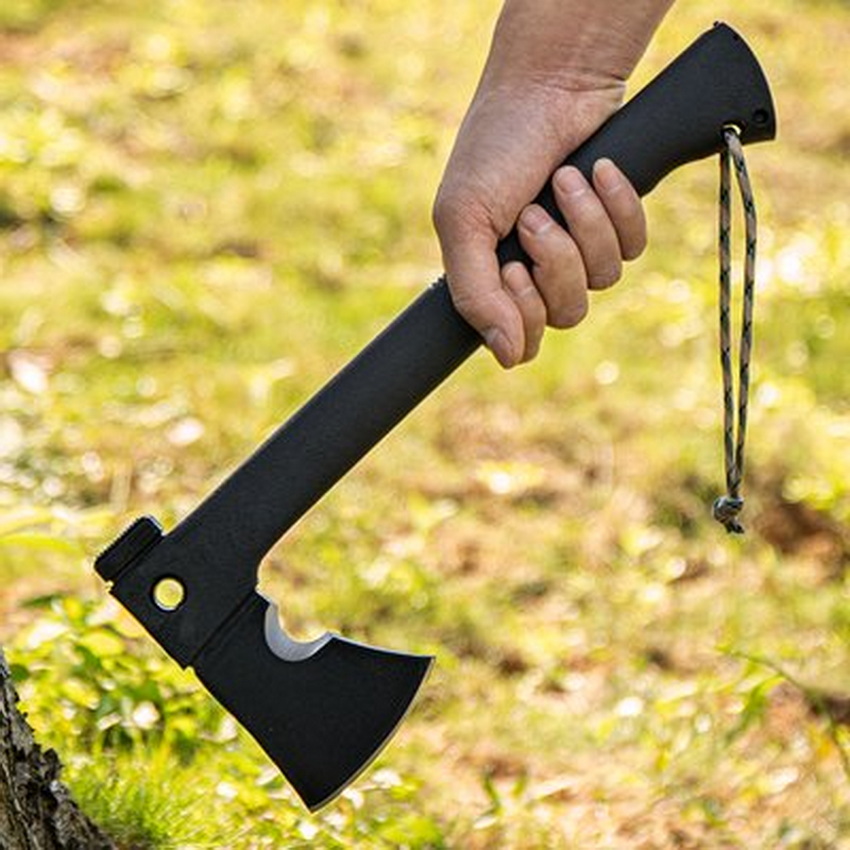![]() Windy
Windy
 WeChat
WeChat
 WhatsApp
WhatsApp
Click:336 seen
The outdoor axe is suitable for exploration and can play a variety of important roles in exploration activities, but it needs to be used and carried reasonably according to the specific
situation:
1. Practical
Build a shelter: If you need to build a temporary shelter during wilderness exploration, the outdoor axe can cut down trees to obtain wood, clean up the surrounding branches, shrubs and
other obstacles, and create a suitable space for building a shelter. For example, in the forest, use an axe to cut the appropriate length and thickness of the branches, build a simple tent
frame or simple wooden house.
Obtaining food and handling ingredients: If there is an opportunity to acquire prey during the expedition, the outdoor axe can be used to handle prey and divide meat. In addition, it can
also split hard shell foods such as nuts to obtain edible parts.
Fire aid: The collected wood may be large and not easy to light the fire directly. At this time, the outdoor axe can cut the large wood into small pieces, increase the contact area between
the wood and oxygen, make the fire easier, and can cut out thin wood chips as kindling to help quickly ignite the fire.
2. Face Limitations
Inconvenient to carry: The outdoor axe usually has a certain weight and volume, which will increase the weight of the explorer and affect the mobility. It can be a burden during long hikes
or adventure scenarios that require fast movement. For example, on long expeditions through complex mountains, carrying a heavy axe would consume more energy.
The use of axes requires skills: improper use is not only inefficient, but also may lead to danger, such as swinging the axe posture is not correct, may hurt themselves or partners.
Beginners need to go through a certain amount of practice before using to become proficient in the operation.
Safety risks: the axe is a certain dangerous tool, in the process of carrying and using, if the storage is not good, such as the axe is not fixed firmly, it may fall and hurt people
during walking; It is also easy to cause safety accidents when used in narrow Spaces or crowded places.

Choosing the right axe for the expedition takes into account a number of factors to ensure that it works in a variety of adventure scenarios, while being easy to carry and use. Here are
some key points to choose from:
1. Use and type
Multi-purpose: If the exploration activities are diverse, involving a variety of tasks such as chopping wood, building camps, and handling prey, the multi-purpose axe is a good choice. This
type of axe usually combines a variety of functions such as axe blades, saws, and hammers.
Specific uses: If it is mainly used to cut down larger trees and create temporary shelters, a two-handed axe is more suitable, which can provide a strong cutting force with the help of body
strength. Single-hand axes are more flexible, suitable for environments with limited space or for delicate operations, such as trimming branches and making wood nails.
2. Size and weight
Lightweight needs: For long-distance hiking, backpacking and other expeditions, it is necessary to carry axes for a long time, and a smaller size and lighter weight style should be selected
to reduce the burden. Generally, the weight of the single-hand axe is 0.5-1.5 kg, and the two-hand axe is 1.5-3 kg. For example, some of Cold Steel's small outdoor axes are designed to
be lightweight and easy to carry.
Balance and handling: The size and weight distribution of the axe should be reasonable to ensure a good sense of balance, so that it is easy to control when swinging. Purchase can
actually hold the wave, feel its balance, to avoid top-heavy or too heavy center of gravity to affect the operation.
3.Material
Axe blade material: High quality steel is the ideal choice for axe blades. Common high carbon steel, such as 1055, 1095 steel, high hardness, can maintain a sharp edge, and toughness
is good, not easy to break, but the rust resistance is relatively weak, need to pay attention to maintenance. Stainless steel materials such as 420, 440C, excellent rust resistance, suitable
for use in humid environments, but the hardness may be slightly lower than high carbon steel.
Axe handle material: Wooden axe handle feel comfortable, can absorb part of the vibration, traditional and popular. Common walnut, hickory wood, etc., durable. Synthetic materials, such
as glass fiber reinforced nylon, have the advantages of light weight, high strength, moisture resistance, not easy to break, suitable for harsh environments.
4. Process and quality
Forging process: Forged axes are usually stronger and more durable than cast ones. The forging process makes the metal texture tighter, the fiber structure more reasonable, and
improves the overall strength and toughness of the axe. You can check the product description or consult the merchant to understand the manufacturing process of the axe.
Detail quality: Check whether the grinding of the axe blade is fine, and the cutting edge should be uniform, sharp, and without defects. The connection between the axe handle and the
axe should be firm, without loosening. If the axe handle adopts mortise and tenon structure, the tenon should be closely embedded in the axe; If the metal band is used to fix, the metal
band should be tightly fitted without cracks or looseness.

